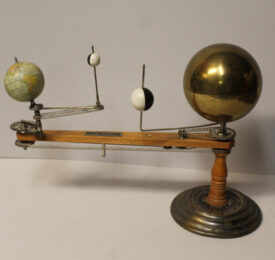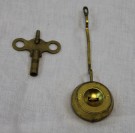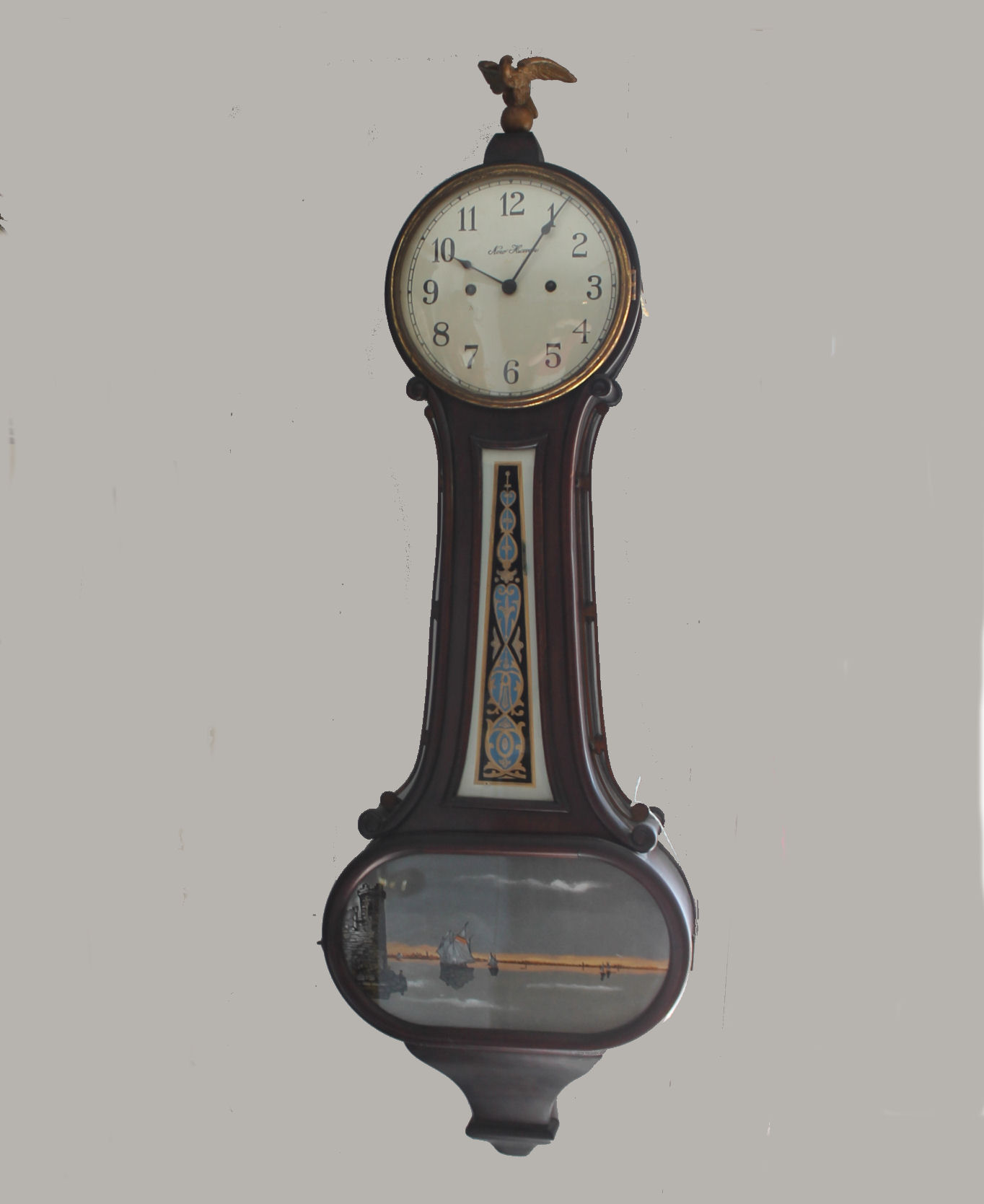Exceptional all original Ansonia clock which depicts a well known French inventor, ‘Denis Papin’ a French inventor of the steam engine. Mr. Papin rests on a decorative stool with his inventor drawings draped across his lap and his other hand is resting on top of his well known invention of the ‘Vapeur’ an atmospheric steam engine. Exceptional detail has been given throughout this piece, note the base which is encircled with carved figures and swords and shields. The base measures 18 1/2″ x 6 1/4″, the clock stands 16″ high to the top finial on the clock. This clock is in working condition and we have had the works cleaned. . One has access to both the front and back of the clock and the clock is signed in the back as follows: ‘Ansonia Clock Co. – Patented June 14, 81- New York, U.S.A.’. 1881 would be the year of this clocks patent date. Clock is complete with winding key and pendulum, and notice the special bend in the pendulum to get it to fit into the clock’s case. Beveled glass front on the face of this clock. This clock came from out of a personal life long collector’s collection of fine antiques who lived in Raytown, Missouri.
We found the following information on Denis Papin on the internet: Denis Papin is the inventor of the atmospheric steam engine. He was born in 1647 in Blois and died in Marbourg (England), in 1714. He made in Paris, his studies of medicine and physics. Of Protestant origin, the Edict of Nantes obliged it with the exile. Denis Papin exiled himself in England, one offered the pulpit to him of mathematics with Marbourg. Its atmospheric machine with vapor, whose origin was a pot known as “the pot of Papin”, was consisted a metal vase whose closed lid very hermetically made it possible to bring water up to very high temperature. In 1698, it began its experiments after having described in a report, in 1687, its machine to raise water, functioned by the play of a piston. Its first steam engine functioned as follows: at the bottom of a vertical roll one poured water which one made heat. The tension of the vapor became equal to the atmospheric pressure, the piston went up, entrainé by weights posed on a plate connected to its stem by a cord and two pulleys. As soon as the piston arrived in top of its race, one removed fire, the vapor was concentrated, the piston went down again, involving the weights of the plate. Denis Papin added then a valve of sureté. In 1707, one allots to him the first steamer tested on Fulda. The boatmen of Munden, animating their boats with the oar, furious, broke the boat. Denis Papin died about it of despair. The steam engine of Denis Papin was improved by Thomas Newcomen in 1712, with a simple reciprocating motion and the modern steam engine is the work of Watt.

















